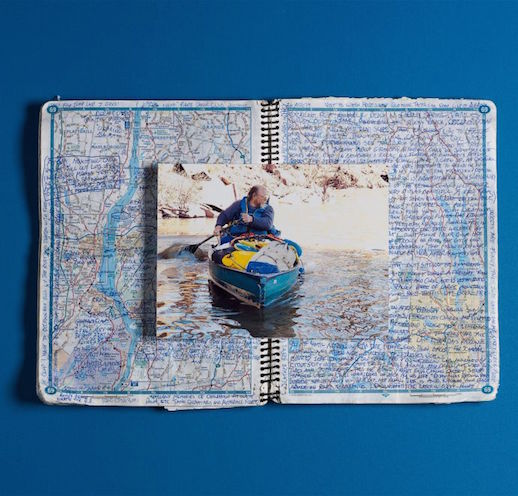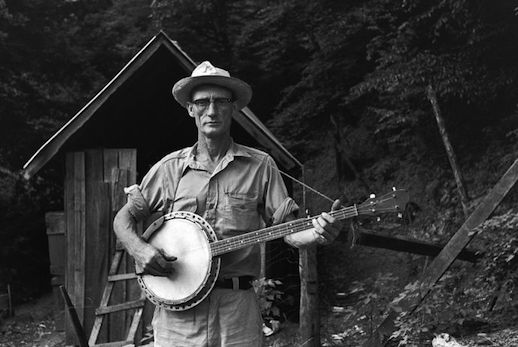A selection of things we’re digging lately
 Dick Conant in Mississippi in 2010. When not in a canoe, he had been living under a lean-to at the edge of a swamp in Bozeman, Montana. “People call it homeless,” he said. “I don’t.” Photograph by Victor Schrager for The New Yorker.
Dick Conant in Mississippi in 2010. When not in a canoe, he had been living under a lean-to at the edge of a swamp in Bozeman, Montana. “People call it homeless,” he said. “I don’t.” Photograph by Victor Schrager for The New Yorker.
In The New Yorker, Ben McGrath recounts the extraordinary story of solitary canoeist Dick Conant, who went missing in 2014: ‘Among the canoe’s contents were seventeen toothbrushes, three Louis L’Amour Western novels, a frying pan, a digital camera, and some soggy stapled papers, on the back of which I’d written my e-mail address and phone number, more than four hundred miles up the coast. Receipts and other assorted documents bore notes and inscriptions, written in blue and black ink: If you allow poverty to hold you back, it means you have neither imagination nor will. Idea ~ Sci-Fi: USB port from human nervous system directly into Internet. I have been denied what our men are supposed to do. So I do what I want, which is to navigate. I’m not good @ everything. I’m good @ long-distance canoe.‘
The Vinyl Factory spotlights Soundway Records, a label born when dedicated digger Miles Cleret returned from Ghana with armfuls of rare 45s and LPs in the early noughties. An interview with Miles is accompanied by this terrific mix:
Soundway Records Vinyl-Only Mix by The Vinyl Factory on Mixcloud
Katherine Price walks her neighbours’ dog along the Crane river in Twickenham. ‘There was much business being done, judging by the noise, which almost drowned out the screeches of the ring-necked parakeets that had assembled nearby. And then suddenly they left, blown on in a great noisy gust towards their roost. I was trying to record the racket on my phone, and I was lucky enough to catch their departure.’
 Photo: John Cohen/Getty
Photo: John Cohen/Getty
Amanda Petrusich on discovering Roscoe Holcomb: ‘Bob Dylan has described Holcomb’s work as exhibiting “a certain untamed sense of control, which makes him one of the best.” I think Dylan was equivocating. For me, Holcomb is easily the greatest American banjo player to have commercially recorded, possessing, as he did, that ineffable combination of virtuosity and openness.’
In a recording first aired on Radio 4 in 2003, reported sightings of a wild ‘big cat’ lead the writer and naturalist Chris Yates to take his 12 year old son and his son’s best friend out into the Wiltshire countryside for a walk from dusk till dawn.
The Swedenborg Society announces its annual Birthday Meeting, which traditionally opens its programme of events and activities for the year. Held on 23 January, the afternoon sees a premiere of Jacob Cartwright & Nick Jordan‘s new short film Last Acre (2016, 11 mins), a documentary portrait centred on a remote settlement of self-built shed and cabin homes, located on the sand dunes of England’s north west coastline, near Barrow-in-Furness. The screening will be followed by a series of talks and a panel discussion from guest speakers Devin Zuber, Ian Hunt, and Ken Worpole.
On the Los Angeles Review of Books appears Catherine Buni‘s momentous essay, Toward a Wider View of “Nature Writing”. We hear from Robert Macfarlane that the essay took her ‘about a year to research and write.’
Grasscut‘s music has always been deeply connected to landscape, and now they’re asking fans to submit their own reflections on places resonant for them, to be featured in a new track and live shows. Here’s the first single from their latest album, Everyone Was A Bird:
Last, but by no means least, we’re very excited to be seeing so much positive press surrounding our friend Amy Liptrot. The Outrun is out now: here it is reviewed in The Independent and The Scotsman. Amy is also interviewed on The Pool. She’ll join Emma Warren in conversation at our Bush Hall event on 28 February.